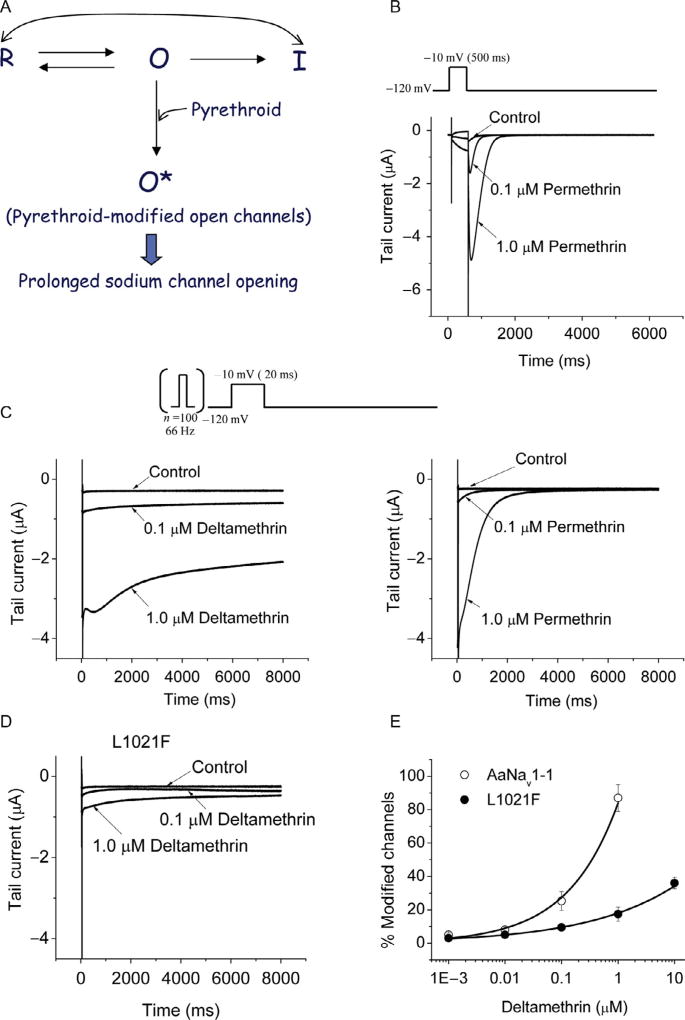Figure 5.4.
Mode of action of pyrethroids. (A) Schematic diagram showing different states of the sodium channel. Pyrethroids (particularly Type II pyrethroids) preferably bind to the open state, but Type I pyrethroids can also bind to the resting state. R, resting state; O, open state; I, inactivated state; O*, pyrethroid-modified open state. (B and C) Tail currents induced by deltamethrin and permethrin (single pulse vs. multiple pulses). (D) Tail currents from AaNav1–1 channels carrying L1021F (equivalent to L1014F in the house fly sodium channel). (E) Dose-response curves for deltamethrin on AaNav1–1 and L1021F channels. Percentage of channel modification by pyrethroids was determined using a method developed by Tatebayashi and Narahashi (1994).

